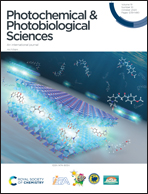Photobiomodulation reduces nociception and edema in a CFA-induced muscle pain model: effects of LLLT and LEDT
Abstract
Photobiomodulation therapy (PBMT) is an effective therapeutic strategy and a noninvasive method to improve the regulation of inflammation and pain. Our aim was to examine the effects of different doses of PBMT on improvement of edematogenic and nociceptive responses in a myositis model in rats. We administered complete Freund's adjuvant (CFA) into the gastrocnemius muscle (GS) of rats to induce myositis and observe the effect of PBMT using different doses of energy and two types of light sources, a low-level laser (LLL) and light emitting diodes (LED). For this, we evaluated the effects of these different energies to improve nociceptive and edematogenic responses using behavioural tests. In addition, we analysed histological images in animals with myositis induced by CFA. The administration of CFA to the GS induced increased cellular infiltrates, edema and a nociceptive response when compared to animals without myositis. When we treated the CFA-induced myositis animals with PBMT (LLLT or LEDT), we observed a decrease in nociception and edema formation. Our results demonstrated that only the major energy for both the LED and LLL was able to remain in a homogeneous form throughout the period analyzed. Based on our results, we suggest that both LLLT and LEDT using the highest dose (3 J) could be an alternative treatment for myositis in rats.



 Please wait while we load your content...
Please wait while we load your content...